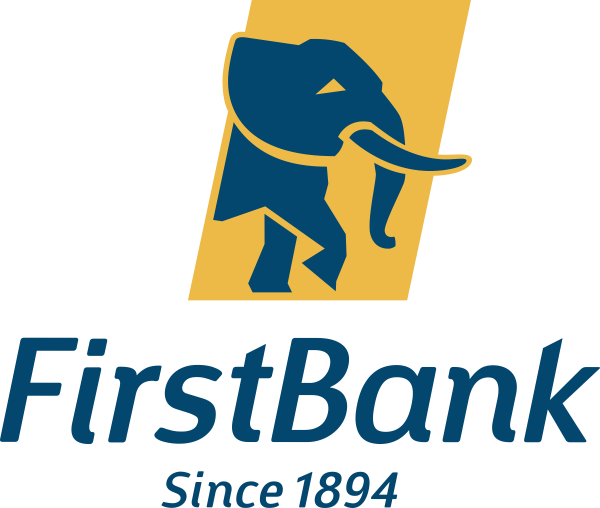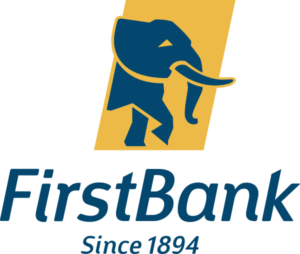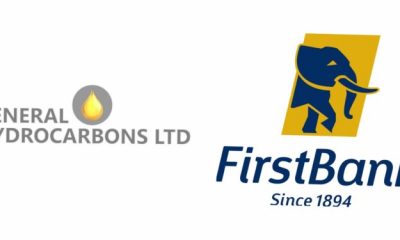Banking
S&P Affirms First Bank ‘B-/B’ Ratings, Revises Outlook to Stable


By Dipo Olowookere
One of the leading rating agencies in the world, S&P Global Ratings, has revised its outlook on First Bank of Nigeria to stable from negative.
In a statement issued on Wednesday, S&P also revealed that it has affirmed its ‘B-/B’ long- and short-term counterparty credit ratings on top Nigerian lender.
In addition, the rating firm said “we have raised our long-term national scale rating on First Bank to ‘ngBB+’ from ‘ngBB’, while we have affirmed our short-term national scale rating at ‘ngB’.”
“Furthermore, we took the same rating actions on FirstBank’s non-operating holding company (NOHC), FBN Holdings PLC (FBNH),” S&P said.
Explaining the reason for its action, the agency said the rating actions reflect its view that First Bank’s regulatory capital has improved and the risk of breaching regulatory requirements has thus diminished.
In addition, the bank’s funding and liquidity remain a credit strength. Although asset quality remains a weakness, it believes this was stabilizing mainly due to the steadying of the oil price and new management’s efforts.
“We expect First Bank will continue to display weaker asset quality metrics and lower profitability than other rated top-tier banks in Nigeria in 2017 due to continuing high credit costs. That said, we believe that the bank’s new leadership team will address the legacy asset quality issues and institute more prudent risk management measures,” the rating company stated.
According to S&P, cost of risk jumped to 10.4% at year-end 2016 from 5.7% at year-end 2015, and nonperforming loans (NPLs) increased to 24.4% for the same period compared with 18.1% the prior year.
The performance of the bank’s portfolio stems from high concentration and foreign currency loans (51% of total loans in 2016), particularly the oil and gas-related exposures.
This performance and the huge impairments have prompted the bank to recruit a new Chief Risk Officer and launch a review of its risk management process to improve loans approvals, risk monitoring, and collection.
The bank is also in the process of de-risking its loan portfolio by converting some of its vulnerable foreign currency exposures to local currency.
“In our opinion, cost of risk will remain high and above the sector average, but decline to 5.3% over the next 12-18 months, while we think NPLs will drop below 20%. At year-end 2016, the bank restructured 5% of its portfolio, with the oil and gas sector accounting for 70% of the total.
“We expect First Bank to continue to restructure some loans, particularly in the downstream oil, manufacturing, and general commerce sectors in 2017.
“We anticipate that our risk-adjusted capital (RAC) ratio for the bank will decline slightly below 5% in the next 12-18 months. This will result from the bank’s risk asset growth moderately outpacing internal capital generation, based on our assumption of a 20% devaluation of the Nigerian naira (NGN) in 2017 and high credit costs,” the statement said.
On Dec. 31, 2016, FirstBank’s CAR improved to 17.8% from 15.4% on June 30, 2016, following a write back of a capital charge of NGN29 billion ($95 million) for exceeding the related party single obligor limit and an increase in retained earnings.
First Bank raised U.S. dollar funding in 2013 and 2014, which underpins its long dollar position at year-end 2016. The bank’s U.S. dollar-denominated subordinated debt provides a natural hedge to its capital position in the scenario of naira depreciation.
Positively, S&P said it views the bank as well-positioned in Nigeria’s competitive banking sector, thanks to its large retail footprint, low cost of funding, and stable deposit base. On Dec. 31, 2016, First Bank recorded a stable funding ratio of 125%, supported by a high proportion (66%) of deposit funding.
The bank’s foreign currency maturity profile displayed positive gaps at year-end 2016. Net broad liquid assets covered 54% of short-term deposits, comparing well with peers.
However, similar to other banks operating in Nigeria, First Bank’s deposit base is somewhat confidence sensitive, due to its contractually short-term nature.
The ratings on the bank reflect the overall creditworthiness of the First Bank group, whose group credit profile (GCP) it assess at ‘b-‘. The bank is the core component of the group, which is one of the largest in the Nigerian financial services industry, with a significant retail franchise, providing it with a leading deposit franchise and good naira liquidity.
S&P said despite the bank’s high systemic importance, the ratings on First Bank reflect its assessment of the bank’s core group status to the First Bank group and its GCP of ‘b-‘.
“We classify the likelihood of support from the Nigerian government to systemically important banks as uncertain and, as such, we do not factor into the ratings any uplift above the bank’s stand-alone credit profile (SACP).
“Our ratings on First Bank’s holding company FBNH are at the same level as the ratings on First Bank, reflecting the absence of debt at the holding company level. Under our criteria, we generally notch down from the GCP to reflect the structural subordination of the NOHC and its exposure to potential regulatory intervention.
“Nevertheless, in FBNH’s case, we take into account the absence of debt at the holding company level and believe that the risk of the NOHC defaulting is not commensurate with the ‘CCC’ rating category,” the agency said.
S&P said further that the stable outlook on First Bank reflects its view that the bank will maintain its CAR above the minimum requirement of 15% over the next 12 months, despite expectations that risk-weighted asset growth will moderately outpace internal capital generation. It also reflects our view that asset quality will continue to stabilize, although still at weak levels, while the bank will maintain its above average funding and adequate liquidity over the next 12 months.
However, the rating agency warned that, “We could lower the ratings on First Bank if we saw a sharp deterioration of capitalization due to higher risk weights (caused by a devaluation of the Naira) or weaker asset quality due to higher credit losses than anticipated.
“A positive rating action on First Bank would depend on the bank substantially improving its asset quality indicators, while maintaining its capitalization, business position, and funding and liquidity at levels commensurate with a higher rating.”
Banking
5 Smart Moves to Wrap Up Your Year in Financial Style

By Margaret Banasko
“Detty December,” Nigeria’s unofficial end-of-year spectacle, is an annual economic boom of concerts and parties, amplified by the return of the “IJGB“ (I Just Got Back) crowd. This celebration drives massive discretionary spending and consumer euphoria.
However, this festive high often leads to a financial low; the “Long January.” This is when critical non-negotiable expenses like rent and school fees hit hard.
Do not treat December as a financial free-for-all. Savvy individuals and business leaders must reframe it as the final, crucial financial quarter. The goal is to shift from emotional spending to deliberate, strategic saving.
Here are five smart, actionable financial moves that are critical for maintaining fiscal discipline that will enable you to maximize the festive season’s enjoyment while effortlessly de-risking and prepping your finances for a strong Q1 trajectory.
- Capitalize on Discounted Bill Payments: The increased consumption of utilities, airtime, and data during this period necessitates higher essential recurring costs. Smart financial governance dictates actively seeking value on these high-frequency expenditures. Pay all essential bills from electricity tokens to data bundles and Cable TV subscriptions through a platform, such as the FairMoney app, that provides a direct financial incentive or cashback on purchases. This ensures that operational necessity does not unduly drain capital, as every percentage saved on recurring utilities is capital effectively preserved for critical Q1 requirements.
- Implement the 50/30/20 Rule Strategically: Acknowledge the inevitable social expenditure of Detty December by imposing a clear framework for resource allocation. This strategic rule dictates how your income must be distributed to ensure financial security. Divide your December income into three non-negotiable categories: Allocate 50 percent of your income directly to critical January financial requirements like rent, transportation, and structured debt payments; this sum must not be compromised. Allocate 30 percent to your discretionary December wants, covering social activities, gifts, and controlled splurges; once this budget threshold is met, spending must cease. Crucially, assign the remaining 20 percent to structured savings and investment.
This 20 percent is non-negotiable and serves as the anchor for long-term wealth creation and a buffer against the Long January strain. You can automate this crucial 20 percent deduction before you even begin spending using the FairSave feature on the FairMoney App, which enables instant autosave while you earn daily interest and retain the flexibility to withdraw anytime.
- Convert Festive Windfalls into Capital: Do not view every incoming festive cash gift or unexpected bonus as mere spending money. Instead, strategically treat any financial “windfall” as a direct deposit into your future wealth accumulation. The 100 Percent Rule applies here: commit to saving or investing 100 percent of any financial gift, as this capital was not part of your planned income, offering a critical opportunity to grow your savings effortlessly. Immediately isolate any unexpected cash injections and categorize them as investment capital rather than disposable income.
By leveraging FairLock on the FairMoney App, you can save 100 percent of the festive cash into a fixed deposit. This ensures the funds are secure and illiquid, accruing interest over the stipulated savings period, which can then be released on maturity to sort out major Q1 projects or investments.
- De-Risk Your December Savings Strategy: FairMoney’s premium, revolving credit line up to ₦5,000,000, FlexiCredit, serves as a crucial liquidity shield over your protected capital. Instead of being forced to prematurely break fixed deposits or liquidate interest-earning savings accounts to cover sudden, urgent expenses such as an unexpected repair or a short-notice business need, you can immediately draw the required funds from your FlexiCredit limit.
This allows critical, ring-fenced funds to remain untouched, continue accruing interest, and maintain their full readiness for the inevitable “Long January” obligations like rent and school fees. FlexiCredit empowers the savvy individual who earns a minimum of ₦250,000 as salary to strategically manage cash flow and capture short-term high-return opportunities without depleting their primary savings or operational capital, offering immediate bridge financing, charged at a competitive 0.25 percent per day only on the amount utilized.
- Prioritize High-Value, Low-Cost Experiential Activities: While Detty December’s allure often stems from high-ticket social events and luxury venues, truly impactful celebrations are measured by the quality of connection, not the cost of admission. Instead of defaulting to expensive restaurant dinners, exclusive concerts, or impulse travel, strategically redirect your social budget toward creative, high-value experiential activities.
Organize themed potlucks with friends, host a family Christmas hangout at home, or explore local attractions like parks and museums that offer rich experiences without the premium price tag. By substituting generic, high-cost outings with thoughtful, collective events, you significantly slash discretionary spending while often increasing the depth and enjoyment of the festive season, guaranteeing maximum emotional return on minimum financial investment.
By applying these five smart moves, you assert control over your finances, ensuring you do not just survive Detty December and the Long January, but wrap up the year not just in celebration, but in financial style, positioning yourself for an empowered and prosperous New Year.
Margaret Banasko is the Head of Marketing at FairMoney MFB
Banking
Stanbic IBTC Bank Assures Continued Strategic Investment in Artists, Designers

By Aduragbemi Omiyale
The creative industry in Nigeria may have nothing to worry about with the likes of Stanbic IBTC Bank around the corner.
The financial institution, which has not hidden its love for the sector, has promised to continue with its strategic investment in the country’s designers and artists.
Speaking at an event, An Evening of Fashion, Art & Lifestyle, the Executive Director for Personal and Private Banking at Stanbic IBTC Bank, Mr Olu Delano, represented by the Head of its Private Banking Segment, Ms Layo Ilori-Olaogun, said the company was proud to be associated with the programme, which it also sponsored.
“At Stanbic IBTC, we recognise Nigeria’s creative sector as a vital driver of economic diversification, employment, and global cultural influence.
“We are proud to support the individuals behind these platforms that elevate African excellence and provide visionary talents the visibility that they deserve.
“Nights like this reaffirm our commitment to continued strategic investment in our artists and designers,” he stated.
The invitation-only ceremony, which was held at The Garden, Federal Palace Hotel, Victoria Island, Lagos, hosted by Africa’s leading luxury fashion house, 2207bytbally, in collaboration with the acclaimed art collective Torrista, brought together high-net-worth individuals, art collectors, designers, media personalities, and luxury brand executives for an unparalleled showcase of creativity and sophistication.
The evening opened with a breathtaking runway presentation featuring three signature segments from the Evolve collection by 2207bytbally: Denim, Ethnic, and 2207 Prints. Each piece exemplified the meticulous craftsmanship, bold innovation, and cultural storytelling that has established the brand as a standard-bearer in African luxury fashion.
Complementing the couture was a curated exhibition by Torrista, transforming the venue into an immersive gallery. Commissioned artworks exploring themes of culture, femininity, and evolution created a robust visual dialogue with the collections, demonstrating the seamless harmony that can result when fashion and fine art converge.
“This evening was about more than clothes or canvases; it was about showing the world that African creativity is limitless. When fashion and art share the same space, magic happens, and tonight, Lagos felt that magic,” the Creative Director of 2207bytbally, Tolu Bally, stated.
Banking
Secure IT, StockMed, 18 Others Make Wema Bank Hackaholics 6.0 Top 20 List

By Modupe Gbadeyanka
The six edition of the Hackaholics of Wema Bank Plc has produced 20 top finalists shared equally between two streams, Ideathon and Hackathon.
The Hackathon finalists are Rapid DEV, Secure IT, Neurafeed, Trust Lock Babcock, Pulse Track, IlluminiTrust, Trust Lock FUTA, Fix Fraud AI, KASH Flow and VOC AI.
The Ideathon finalists include PLOY, Fertitude, VarsityScape, Mama ALERT, StockMed, Chao, All Arbitrate, FarmSlate, Sane AI and Cycle X.
They emerged after a two-day pre-pitch held on December 16 and 17, 2025, for the grand finale slated for Friday, December 19, 2025.
They grand finale of Hackaholics 6.0 will convene the top players in Africa’s tech and innovation ecosystem, creating an avenue for these finalists to not only put their creativity to the ultimate test but also give their solutions visibility to potential investors for additional funding opportunities beyond the prizes to be won.
The prizes to be won for the Ideathon include N25 million for the winner, N20 million for the first runner-up, N15 million for the second runner-up and N5 million each for two women-led teams.
In the Hackathon category, the first to fourth-place winners will receive N20 million, N15 million, N10 million and N5 million, respectively.
The pre-pitch saw the top 43 contenders battle in a game of innovation and problem solving, presenting compelling pitches for a chance to make it to top 10 in their respective streams.
After a rigorous stretch of pitches and presentations, the top 20 emerged, securing their spot in the grand finale of Hackaholics 6.0.
“Hackaholics started off as a hackathon and morphed into an ideation. For Hackaholics 6.0, the sixth edition, we decided to give both the builders of new solutions and the refiners of existing ones, an opportunity to make meaningful impact.
“For us at Wema Bank, we understand that innovation isn’t just building from scratch. Sometimes, it’s looking at what exists and developing new ways to optimise that and create more efficiency. This is the idea behind our two-stream Ideathon-Hackathon structure.
“Every year, Hackaholics shows us just how eager and motivated Nigerian youth are when it comes to exploring creativity and innovation, and we are honoured to be the institution that provides them with the platform and resources to put this drive to good use.
“We toured seven cities, indulged 1,460 participants and discovered hundreds of remarkable ideas; some of which needed some refining and some of which deserved to move to the next stage.
“For those who needed to go back to the drawing board, we provided useful guidance and for the top contenders, we were able to shortlist to the top 43, who proceeded to the pre-pitch. To every participant, Wema Bank is proud of you. This is just the beginning,” the chief executive of Wema Bank, Mr Moruf Oseni, said.
-

 Feature/OPED6 years ago
Feature/OPED6 years agoDavos was Different this year
-
Travel/Tourism9 years ago
Lagos Seals Western Lodge Hotel In Ikorodu
-

 Showbiz3 years ago
Showbiz3 years agoEstranged Lover Releases Videos of Empress Njamah Bathing
-

 Banking8 years ago
Banking8 years agoSort Codes of GTBank Branches in Nigeria
-

 Economy3 years ago
Economy3 years agoSubsidy Removal: CNG at N130 Per Litre Cheaper Than Petrol—IPMAN
-

 Banking3 years ago
Banking3 years agoFirst Bank Announces Planned Downtime
-

 Banking3 years ago
Banking3 years agoSort Codes of UBA Branches in Nigeria
-

 Sports3 years ago
Sports3 years agoHighest Paid Nigerian Footballer – How Much Do Nigerian Footballers Earn





















